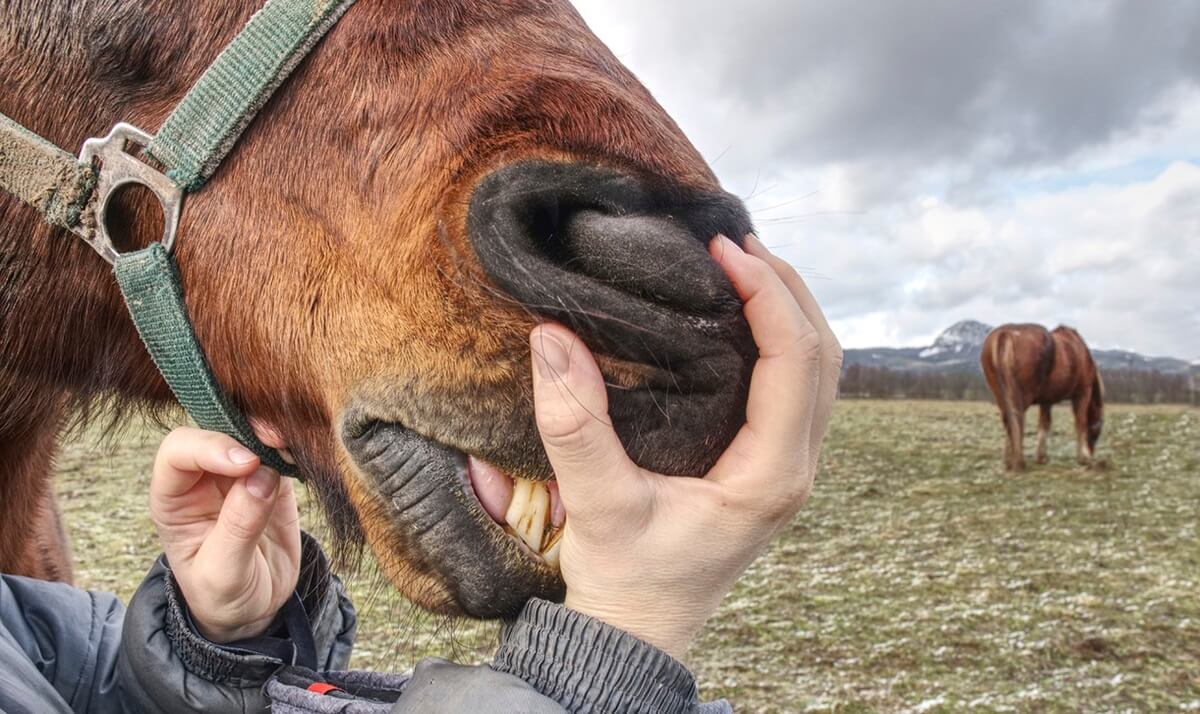By Meriel Moore-Colyer for Haygain
How to Take, Measure and Track Key Vital Signs
Maintaining good health in our horses is every owner’s responsibility. Avoiding performance-limiting viruses, preventing the development of more serious diseases, and ensuring your horse is content and living as natural a life as possible should be everyone’s top priority.
Objectively monitoring your horse’s health daily will make you acutely aware of his “normal” vital statistics and improve your ability to detect any emerging problems. It will also help you build a better understanding of physiology and deepen your connection with your horse. Alongside the normal subconscious observational overview we all do each morning (pricked ears, eating normally, interested in life, clear eyes and clear nostrils) there are several objective signs of good health that are easily monitored. Make sure you measure your horse’s vital signs before exercise or several hours after the work session, so you are truly measuring resting values.
In our previous article (see NWHS September/October 2023 issue) we learned how to measure your horse’s pulse, respiration rate, and temperature. This article focuses on monitoring gut sounds, feed and water intake, and mucus membrane health.
How to Evaluate Your Horse’s Gut Sounds
Digestion in the horse is a highly dynamic process. The gut should have a constant flow, maintained by trickle feeding in one end and frequent defecation from the other.
As the gut is essentially a large fermentation tube, it should be continually moving and gurgling. You can easily hear this by putting your ear to the flank. Absence of these gut sounds may be an early indication of colic. Because colic is still the biggest cause of death in horses across the globe, monitoring gut activity is of utmost importance.
Fecal outputs in horses can alter in consistency and color according to diet, and some horses will defecate more than others. When horses are turned out on lush pasture, manure often becomes soft, wet, and dark green, while manure produced from hay or pellet diets commonly looks brown and is expelled as softish round balls.
Fecal dry matter (DM) can alter between 18–35% DM, and the book value will say that an average horse should be producing 8–12 fecal outputs in 24 hours. However, every horse and pony I have ever owned/monitored/used in experimental trials has defecated much more than that! Again, get to know what the norm is for your horse.
Measure Your Horse’s Feed and Water Intake
We all subconsciously measure feed intake, but do you take note of the amount of water your horse drinks? Are you also aware of any partially chewed feed on the ground? A reduced feed intake may be due to a rise in environmental temperature and nothing to worry about, but it could indicate a problem with his teeth.
Going off feed altogether is always a sign of something serious. My dressage horse loved his hay, but after a long road and boat trip from Ireland to the UK, and despite several rest stops, he developed travel sickness. The first thing I noticed was him not eating his hay, so I immediately called the vet and the early treatment of this potentially serious condition meant he was fully recovered in 24 hours.
Evaluate Your Horse’s Mucus Membranes
The color of mucus membranes (eyes, lips, gums, and nostrils) should be a healthy light pink, which shows good circulation and hydration status. Checking circulation (capillary refill time) can be done by pressing the gums on the upper jaw, releasing, and counting how quickly the blood flows back into the area—it should do so in two seconds. Mind your fingers! Horses have an amazing capacity to quickly trap unsuspecting fingers.
Make Monitoring a Habit
Monitoring daily signs of good health in an objective way is a good habit to form. As with weight management, seeing our horses every day makes it hard to notice small changes. But if you stop and think about measuring and recording something you pay closer attention.
When you start this process, don’t worry if values fluctuate a little. You will need to do this for a couple of weeks before you learn what’s normal for your own horse.
Make these measurements part of your daily regimen. Jot them down on a chart so you get a good indication of how your horse alters according to season, fitness, and everyday activities. Breed and size make little difference in any of the above statistics. Environmental changes such as temperature, work, and fitness levels are more likely to alter the horse’s vital signs. So, get measuring and know your horse inside out!
Author Meriel Moore-Colyer is an equine science professor and equine nutrition expert.
Article provided compliments of Haygain. For more great content in their Horse Health Library, visit www.haygain.us
See Part One: https://nwhorsesource.com/equine-wellness-know-your-horses-normal
See this article in the November/December 2023 online edition:
November/December 2023

The Northwest Horse Source is an independently owned and operated print and online magazine for horse owners and enthusiasts of all breeds and disciplines in the Pacific Northwest. Our contemporary editorial columns are predominantly written by experts in the region, covering the care, training, keeping and enjoyment of horses, with an eye to the specific concerns in our region.





